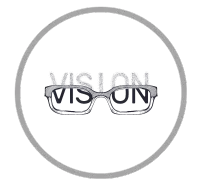Myopia Care
Axial Length Monitoring in Myopia Care
FSDAVCFEBFEVSDDVFSD
FSDAVCFEBFEVSDDVFSD
FSDAVCFEBFEVSDDVFSD
Why Axial Length Matters Early
Axial length monitoring is essential in myopia control for kids. It measures how long the eye is from front to back—known as axial length—and even small increases can raise the lifetime risk of serious conditions like retinal detachment or myopic maculopathy. Unlike changes in glasses prescriptions, axial length progression offers insight into actual structural eye changes, making it a more reliable indicator for managing myopia in children.
At our myopia management clinic in Spring, TX, we use consistent equipment and timing to ensure accurate tracking. A flatter growth curve suggests treatment is effective, while a steeper one may require adjusting therapy options like Ortho-K or MiSight contact lenses.
Axial length monitoring is essential in myopia control for kids. It measures how long the eye is from front to back—known as axial length—and even small increases can raise the lifetime risk of serious conditions like retinal detachment or myopic maculopathy. Unlike changes in glasses prescriptions, axial length progression offers insight into actual structural eye changes, making it a more reliable indicator for managing myopia in children.
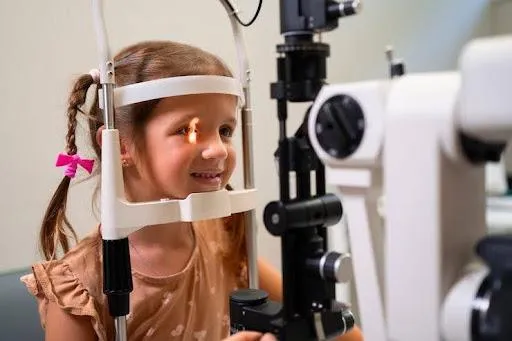
At our myopia management clinic in Spring, TX, we use consistent equipment and timing to ensure accurate tracking. A flatter growth curve suggests treatment is effective, while a steeper one may require adjusting therapy options like Ortho-K or MiSight contact lenses.

How Optical Biometry Measures Growth
Optical biometry is a fast, non-invasive method that uses light to measure the eye’s axial length with extreme accuracy. Ideal for pediatric eye exams, this contact-free technology delivers quick and consistent results down to two decimal points. Optical biometry is especially valuable in monitoring eye growth in children, helping guide myopia control for kids with precision.
At Kleinwood Vision, each scan session includes 3–5 readings per eye, which are then averaged for accuracy. Since factors like hydration, allergies, or screen time can affect short-term results, we ensure consistency by using the same device at similar times for every visit. This approach allows for reliable axial length mm per year comparisons to track true progression.
To create a personalized myopia control plan, optical biometry is paired with corneal topography, retinal imaging, and cycloplegic refraction. Most children begin with a baseline exam, return in six months, and then follow a 6–12 month monitoring schedule. However, if axial length progression or symptoms suggest faster changes, earlier rechecks may be needed. Our pediatric team makes testing comfortable and stress-free by using engaging visuals and calm, supportive coaching throughout each visit.
Reading the Growth Report at Home
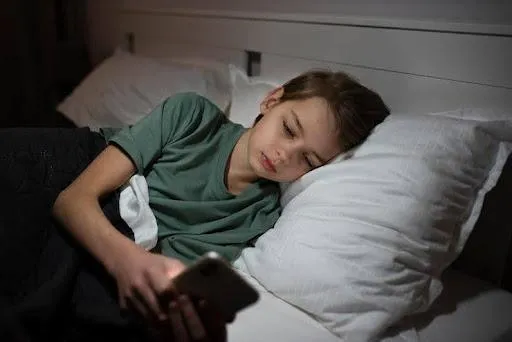
Your child’s growth report will include axial length monitoring data from each visit, the annualized axial length mm per year rate, and a graph showing overall progression. A flattening line indicates that treatment is working, while a rising line may suggest the need to adjust the myopia control approach. This data-driven tracking helps ensure timely, personalized decisions.
To make the most of each visit, ask your eye doctor to mark your child’s ideal range on the chart. This makes it easier to interpret each data point at a glance.

During appointments, focus on two important questions: Are we within the safe band? If not, what’s the next step—Ortho-K for children, MiSight contact lenses, or low-dose atropine? These discussions help you stay informed and involved, giving you the confidence to partner with your doctor in managing your child’s long-term vision health.
Clinicians at our Houston myopia management clinic simplify results into clear tiers: “on target,” “borderline,” or “intervene.” These easy-to-understand labels help parents know whether a current myopia control plan is working or needs to be adjusted. Temporary changes in axial length progression can occur due to illness, screen overuse, or skipped wear nights, so we may recommend a recheck sooner than planned if needed. This tiered system takes the guesswork out of next steps and ensures your child receives timely care.
Success in myopia control means slowing the eye’s structural growth trend, even if minor glasses updates are still needed. We encourage parents to save growth charts from the portal or print them out for easy tracking. These visuals make it simple to see progress and identify trends over time. Understanding axial length progression empowers you to stay informed between visits and makes each follow-up more meaningful, ensuring you’re always an active partner in your child’s eye health.
Turning Numbers Into Care Decisions
If axial length mm per year readings are stable or slowing, we often continue the current treatment—whether that’s MiSight contact lenses, Ortho-K for children, or low-dose atropine—and may extend the time between follow-up visits. This indicates the current plan is effectively slowing myopia progression. In cases where growth exceeds the target range, we refine the Ortho-K fit, update MiSight® parameters, or adjust the atropine concentration. For children at high myopia risk, combination therapy may be recommended.
When comfort, handling, or wear-time barriers occur, we address those first before considering a treatment change. At Kleinwood Vision, we focus on creating proactive, personalized myopia control plans so that adjustments are calm and well-informed, never rushed. Our team partners closely with parents to ensure consistency and maintain control, supporting each child’s long-term eye health. Understanding axial length mm per year trends helps guide smarter, more confident decisions throughout your child’s treatment journey.
Home Habits That Slow Myopia
Consistent home routines support your child’s myopia control. Aim for 90–120 minutes of outdoor time daily through play, sports, or family walks. Track progress with a fridge chart and reward weekly consistency, not just occasional big days. These daily habits help slow axial length mm per year progression.
Ensure all reading and screen time happens at least a forearm’s length away. Raise screens to eye level, enlarge text size, and maintain bright, glare-free lighting to reduce eye strain and support vision development during treatment.
Consistent home routines support your child’s myopia control. Aim for 90–120 minutes of outdoor time daily through play, sports, or family walks. Track progress with a fridge chart and reward weekly consistency, not just occasional big days. These daily habits help slow axial length mm per year progression.
Ensure all reading and screen time happens at least a forearm’s length away. Raise screens to eye level, enlarge text size, and maintain bright, glare-free lighting to reduce eye strain and support vision development during treatment.
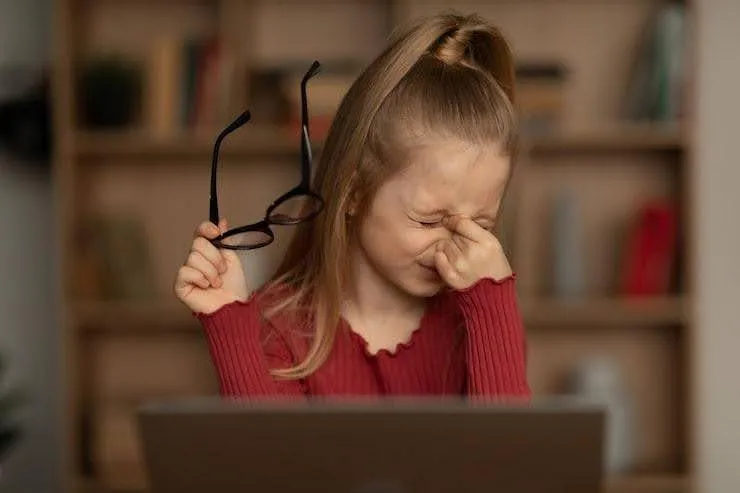
End each day with 30 minutes of device-free time before bed. Prepare an outdoor kit with hats and backup glasses to make time outside easier. Whether your child uses MiSight contact lenses, Ortho-K for children, or low-dose atropine, small, consistent actions reinforce clinical progress.

End each day with 30 minutes of device-free time before bed. Prepare an outdoor kit with hats and backup glasses to make time outside easier. Whether your child uses MiSight contact lenses, Ortho-K for children, or low-dose atropine, small, consistent actions reinforce clinical progress.
Follow-Ups, Cadence, and Tapering Plans
Myopia control follow-ups vary depending on your child’s age and growth rate. Younger children or fast growers are typically scheduled for visits every six months, while stable teens may only need annual check-ins. At each follow-up, we measure axial length, refraction, and assess overall ocular health. Using consistent tools and timing ensures we track axial length progression with accuracy, which is essential for making informed treatment decisions.
Parents are encouraged to bring all current contact lenses, glasses, solutions, and a brief habit log to each appointment. This log should include details such as weekly outdoor time, screen use, skipped wear nights, and any allergy symptoms. These factors provide helpful context for interpreting subtle changes in axial length mm per year and can explain short-term variations in the data.
If your child’s axial length growth exceeds the target range at two or more visits, we may adjust the treatment plan. Options include refining the Ortho-K fit for children, updating MiSight contact lens parameters, or modifying the concentration of low-dose atropine. In some cases, especially when progression is persistent, we may recommend combination therapy along with more frequent follow-ups.
Once axial growth shows a stable, flattened pattern over at least two intervals, we can consider tapering the treatment. This might involve reducing atropine dosage, adjusting Ortho-K wear schedules, or extending the time between visits. All tapering plans are designed with safety nets and clearly defined recheck triggers. We also align follow-up timing with school and travel schedules to ensure that the process remains both realistic and effective.
Visit Checklist for Parents and Teens
For your child’s myopia control visit, pack all essentials: current glasses, contact lenses, case, and any solutions. Bring along a quick tracker that records outdoor time, screen habits, missed wear nights, and any allergy symptoms since the last visit. This information helps provide context for small changes in axial length progression.
During the exam, ask key questions like, “What is our axial length mm per year?” and “Are we on target for age and treatment?” If progress isn’t on track, discuss what adjustments might be needed—such as changes in lens fit, wear time, medication, or habits—and when the next re-measurement will take place.
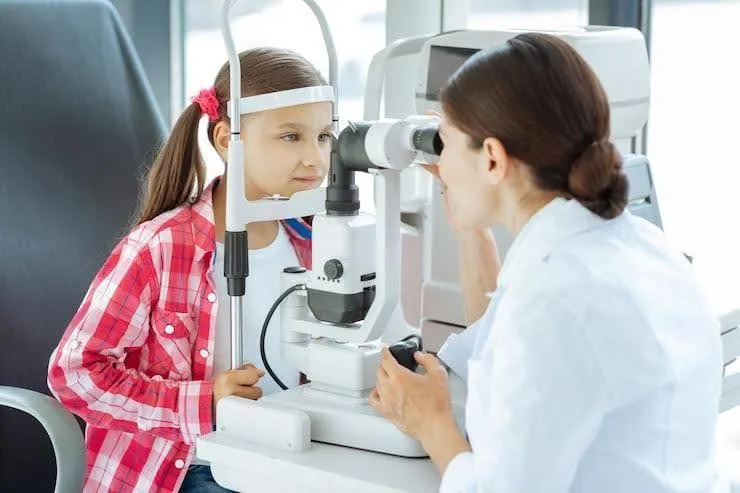
For your child’s myopia control visit, pack all essentials: current glasses, contact lenses, case, and any solutions. Bring along a quick tracker that records outdoor time, screen habits, missed wear nights, and any allergy symptoms since the last visit. This information helps provide context for small changes in axial length progression.
During the exam, ask key questions like, “What is our axial length mm per year?” and “Are we on target for age and treatment?” If progress isn’t on track, discuss what adjustments might be needed—such as changes in lens fit, wear time, medication, or habits—and when the next re-measurement will take place.
Before you leave, make sure to schedule your next appointment, take a photo of the updated treatment plan, and ask for access to the patient portal. This way, you can easily review growth charts and contact the clinic anytime for support or questions between visits.
Before you leave, make sure to schedule your next appointment, take a photo of the updated treatment plan, and ask for access to the patient portal. This way, you can easily review growth charts and contact the clinic anytime for support or questions between visits.
Your Simple Monitoring Roadmap at Home
Post your child’s target axial length mm per year and two key daily habits—such as outdoor time and near-work breaks—on the fridge. Review progress together weekly as a family to stay involved and motivated. This routine encourages healthy habits that support effective myopia control and helps everyone stay focused on long-term vision goals.
If the axial length progression curve flattens, continue the current plan as it’s working well. However, if growth increases, look to improve sleep quality, boost outdoor time, and correct reading posture to reduce strain. Don’t hesitate to message us to schedule a recheck if you notice changes — contact us. With consistent home routines and ongoing support from your local myopia management clinic, most kids stay on track toward safe, successful outcomes, protecting their vision for years to come. Maintaining this partnership ensures your child’s eye health remains a priority.

Contact Info
Hours of Operation
Mon - Fri | 9:00 AM - 5:00 PM
Sat - Sun | Closed
Holiday Hours: We are closed for the following holidays: New Years Day, Memorial Day, Independence Day, Labor Day, Thanksgiving Day, Christmas Day
© 2025 Kleinwood Vision. All rights Reserved.

